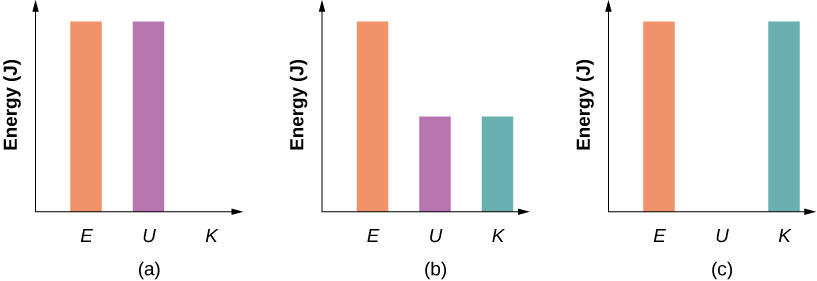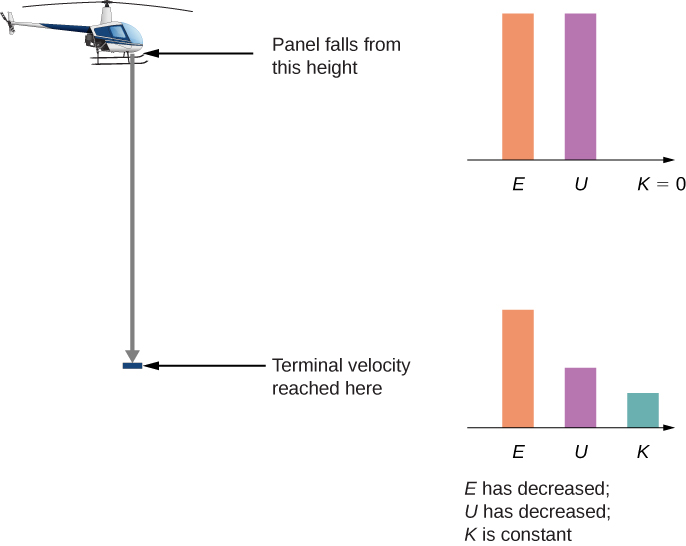| << Chapter < Page | Chapter >> Page > |
Since the particle is released from rest, the initial kinetic energy is zero. At the lowest point, we define the gravitational potential energy to be zero. Therefore our conservation of energy formula reduces to
The vertical height of the particle is not given directly in the problem. This can be solved for by using trigonometry and two givens: the length of the pendulum and the angle through which the particle is vertically pulled up. Looking at the diagram, the vertical dashed line is the length of the pendulum string. The vertical height is labeled h . The other partial length of the vertical string can be calculated with trigonometry. That piece is solved for by
Therefore, by looking at the two parts of the string, we can solve for the height h ,
We substitute this height into the previous expression solved for speed to calculate our result:

Check Your Understanding How high above the bottom of its arc is the particle in the simple pendulum above, when its speed is

Step 2: Gravitational force is acting on the panel, as well as air resistance, which is stated in the problem.
Step 3: Gravitational force is conservative; however, the non-conservative force of air resistance does negative work on the falling panel, so we can use the conservation of mechanical energy, in the form expressed by [link] , to find the energy dissipated. This energy is the magnitude of the work:
Step 4: The initial kinetic energy, at is zero. We set the gravitational potential energy to zero at ground level out of convenience.
Step 5: The non-conservative work is set equal to the energies to solve for the work dissipated by air resistance.

Notification Switch
Would you like to follow the 'University physics volume 1' conversation and receive update notifications?